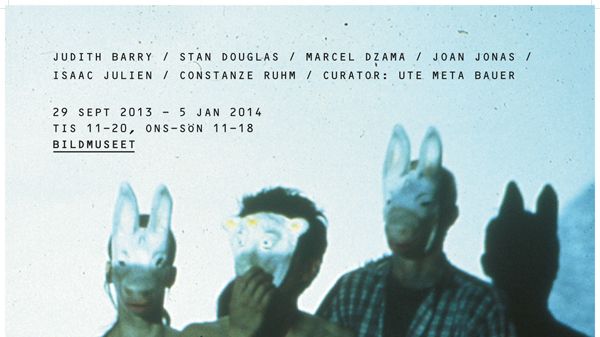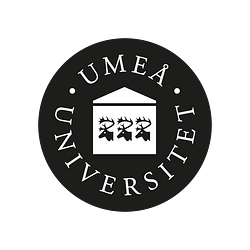
Press release -
Bildmuseet / Theatrical Fields
Theatrical Fields examines forms of artistic practice that make use of the theatrical in performance, film and video. Developed as a research project by the curator Ute Meta Bauer, Theatrical Fields explores the analytical and political potential of theatricality through various manifestations ranging from an exhibition to public presentations, film programme to a live performance.
The exhibition brings together major video installations: “Voice off” by Judith Barry (USA), “Suspiria” by Stan Douglas (Canada), “Sister Squares” by Marcel Dzama (Canada), “Lines in the Sand” by Joan Jonas (USA), “Vagabondia” by Isaac Julien (UK) and “ X Characters RE(hers)AL” by Constanze Ruhm (Austria). Situated in juxtaposition, the works generate temporal spaces for experimental action and create unfamiliar proximities and encounters.
The exhibition also features a programme of films by Marie-Louise Ekman (Sweden), Eva Meyer/Eran Schaerf (Germany) and Ulrike Ottinger (Germany) screened on dedicated weekends and evenings in the presence of the artists. Related materials such as storyboards, sketchbooks, costumes, posters that constituted an important component in conception, production and dissemination of the films are presented in the exhibition.
The video installations and selected films, introduce different methods and foreground various approaches, yet they all investigate the theatrical specific use of elements such as “character”, “voice”, “script”, “choreography” to deconstruct linear ascriptions and reconfigure them in nuanced positions of diversity.
Open lectures, artist talks and performance
The use of theatricality in the exhibited works, their influence on contemporary art and its theoretical discourse will be explored during two whole-day events featuring presentations by the artists and invited researchers on September 28th and October 26th.
As part of the public programme for the exhibition, Joan Jonas will perform the piece “Reanimation” with live music by jazz pianist Jason Moran. Based on the novel “Under the Glacier” by the Icelandic Nobel prize awarded author Halldór Laxness, “Reanimation” plays with ideas of collages and animation. The piece is presented by Bildmuseet on October 25th in collaboration with Umeå Jazz Festival. Please note, Joan Jonas is also featured at Kulturhuset, Stockholm, this autumn.
Theatrical Fields is produced by Bildmuseet and curated by Ute Meta Bauer.
Assistant curator: Anca Rujoiu
For further information
Director Katarina Pierre
katarina.pierre@bildmuseet.umu.se
+46 90 786 9632
Related links
Topics
Categories
Bildmuseet is a centre for contemporary art and visual culture as well as a place for experiences, reflection and discussion. The museum exhibits contemporary international art, photography, architecture and design, along with art historic retrospectives. Existential, political and philosophical issues are key to the programme. The exhibitions are complemented by guided tours, lectures, seminars, films and performances. Workshops and educational activities inspire creativity.
Since 2012 Bildmuseet has been housed in an acclaimed building spanning over seven floors at the Arts Campus by the shores of the Ume River, right next to Umeå Academy of Fine Arts, Umeå Institute of Design and Umeå School of Architecture. The new museum building, designed by Henning Larsen Architects in collaboration with White, was nominated for the European Mies van der Rohe Award 2013, and has been named one of the world’s most beautiful university museums.
Umeå University is one of Sweden's largest institutions of higher learning with over 34,000 students, 4,200 employees, a well-established international research profile and a broad range of study options.

